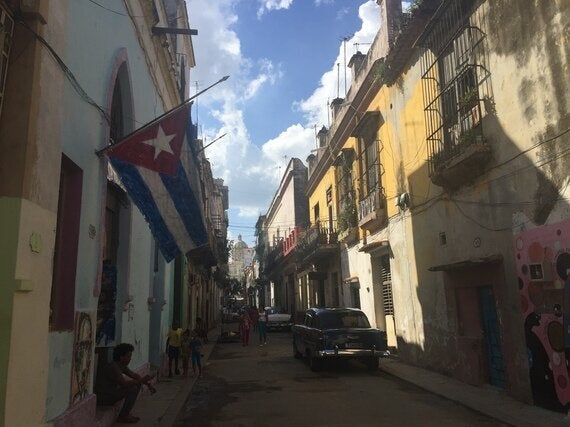
All photos © Rachel Lankester
I only spent two weeks in beautiful Cuba but I came away inspired by what the country has achieved despite, at times, great imposed hardship. It seems to me nations around the world can learn a lot from Cuba, especially its nemesis the US.
So what can we learn? I've found there are always things to learn from communities that develop in isolation. This is a whole country that has been isolated from the West for over 50 years, despite its nearest neighbour being the leader of the Western world.
Cuba's clock effectively stopped in 1960, when the US implemented a trade embargo. This meant both imports and exports became extraordinarily difficult and expensive, and ways of making do became paramount. The embargo followed the communist revolution of 1959 led by Fidel Castro, and the nationalisation of many American-owned businesses in Cuba.
The embargo still exists, but on Tuesday the US government announced it is finally lifting restrictions on export financing. Cuba survived, in fact even flourished. Despite rationing and CIA sponsored attempts to both invade and assassinate Castro, the government endured and seemingly brought most of its people along with it. Of course Cuba isn't perfect. No country is. But I was impressed. Maybe history will show the US actually did Cuba a favour when it cut Cuba off like a rotten limb.
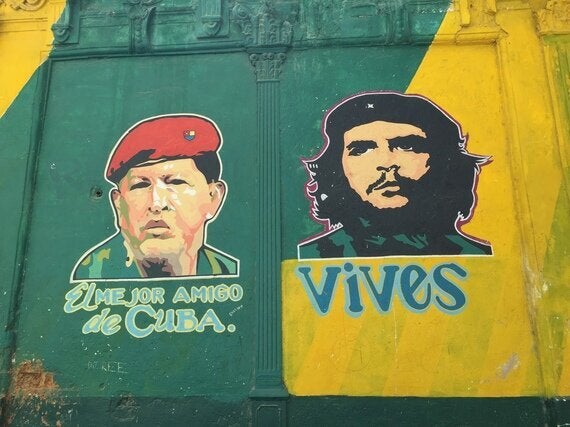
Lesson 1: Self-sufficiency is possible
Cubans have essentially been living inside a bubble. It's a porous bubble but a bubble nonetheless. Cuba had to be self-sufficient and make the most of what it had when the clock stopped. When America stopped oil supplies, Cuba turned to the Soviet Union for help. But when that collapsed in 1991, Cuba lost approximately 80% of both its imports and exports, and GDP dropped by 34%. The Special Period that followed caused near famine with meat and dairy products dropping out of the Cuban diet. One study claimed going vegan and organic through need, actually improved the health of the nation. I bet it didn't feel like that at the time! Eventually Venezuela stepped in with oil and other supplies in return for doctors. As a result, images of Hugo Chavez are everywhere across the country as 'the best friend of Cuba'.
Lesson 2: Reduce, re-use, recycle works as a lifestyle
When you can't bring much into a country, nor export very much either, you have to limit consumption and take care of what you have. The wonderful 1950s automobiles that plough the streets, for example, are testament to what can be preserved and a joy to see, even if their exhausts are far more polluting than current day cars. (I managed to justify their on-going existence by noting that the production process for new cars has a higher carbon footprint than just running an old car into the ground - even if Cubans have kept these cars on the road for over 50 years, well past the US consumer use by date!)
As it was, laws in place since the revolution prevented the sale or purchase of cars, so if you owned a car you kept it running. No matter what. If it needed a new steering wheel, you found it one, recycled from wherever you could. If it needed new lights you found those. If your car needed to run on cooking oil you made it run on cooking oil. Need is the mother of invention. Nowhere in the world can you see the vast collection of antique cars that are everyday vehicles in Cuba and they are a huge tourist draw. It's a delight to experience their beauty and style.
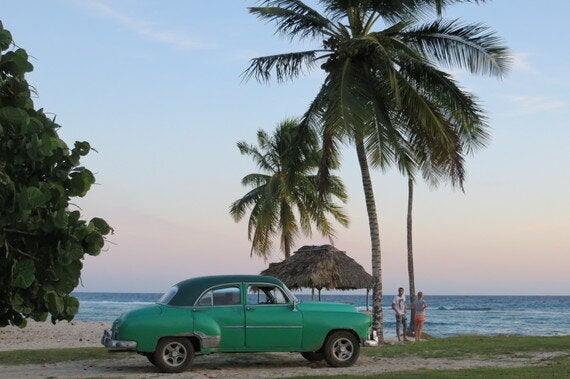
Lesson 3: If you never developed a plastic addiction, you don't need to wean yourself off now
At the recent Lumiere festival in London, the fountains of Trafalgar Square were filled with glowing rubbish. Plastic Islands was inspired by the 'Great Pacific Garbage Patch' of plastic bags, bottles and other debris growing in the North Pacific Ocean. Some sources estimate this area to be twice the size of Texas!
The only plastic containers we saw in Cuba were for bottled water and soft drinks sold in shops, bars and restaurants. Locals drink tap water so I guess the bottled water was mainly for foreigners. We saw very little plastic rubbish around, few plastic bags, no rubbish on the side of the highway and people took their own bags or baskets to the market. There was none of the sanitised plastic food packaging on which the 'developed world' has become so dependent.
By contrast the US throws away 35 billion plastic water bottles a year even though tap water is mostly potable. It takes 17 million barrels of oil each year to make those water bottles. In 2015 National Geographic reported that 8 million tons of plastic ends up dumped in the world's oceans. The US isn't even the worst offender in terms of total tonnage; it's number 20 on a list of major sources of ocean-bound trash with China at the top. We can only hope that if Cuba has survived this long with minimal plastic, it can carry on that way and save its oil imports in the process.
Lesson 4: You can survive heat without air conditioning
It's hot in Cuba, seriously hot. But there's very little air conditioning even in Havana. The power supply and infrastructure simply aren't there to support air conditioners, even if they are available and affordable. But life still goes on. People work, dance, sing. They don't expect to live at a constant internal temperature of 70°F (21°C) all year round.
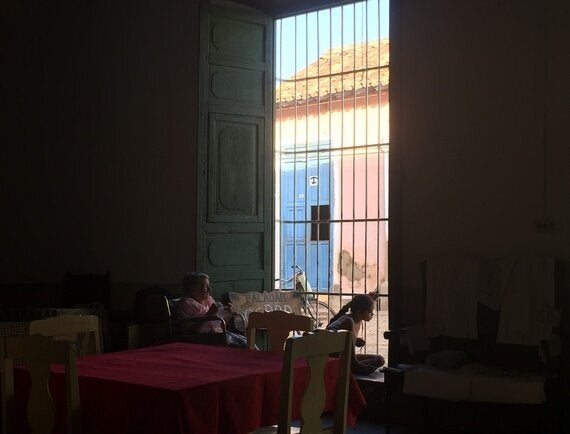
Apart from hotels and commercial or high rise buildings, we didn't see many glass windows either. Most domestic low-rise 'windows' are just frames with adjustable slats for privacy and security or an ornate metal grill over shutters. Air circulates freely and the night time breeze can be directed using those clever slats. You save energy and limit the impact of aircon emissions on climate change. You need to get used to other people's noise, but Cubans don't seem too fussed about that (see below).
Lesson 5: Saving energy works when it's a mindset
Many of the houses we saw in central Havana look like they could have fallen down years ago. And yet, hanging from the balconies, you'll see yesterday's washing hung out to dry. Or perhaps because it's so very warm, it's today's washing already looking dry. As well as not using aircon, there are no laundry dryers, no dishwashers and minimal domestic and street lighting at night. Even in California and Florida people with outside space would rather waste energy than use the sun and air to dry their clothes. Saving energy is a way of life in Cuba. It has to be.
Lesson 6: Building strong local communities needn't be a lost art
There is no digital generation in Cuba. People rarely have computers and only the very savvy can access the internet in big cities like Havana. There are no computer games and not much choice on TV. So what do kids do after school? They play or chat outside. Football is played on every corner. Whole families sit out on the street until it's time to watch the latest soap opera with the front door wide open and neighbours coming and going. It's common for adult children to live with their parents. Community and family are key. Streets feel safe and friendly. Many homes have a ghetto blaster, and salsa and Cuban son thump out in the warm night air. But nobody seems to mind. You're used to the noise of your neighbours. And even toddlers are wriggling their hips to the beat after supper on the street.
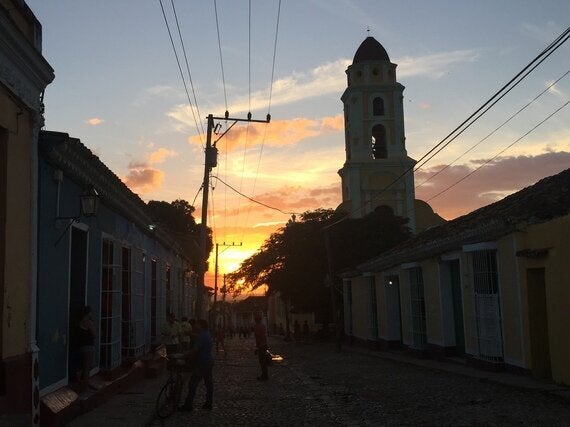
Lesson 7: Having enough is a viable alternative to rampant consumerism
There is little or no advertising in Cuba and it's so refreshing to walk along streets not plastered with promotions for all manner of consumer goods and services. What bill boards there are, and there aren't many, are reserved for socialist slogans or appreciation of Ché Guevara and Nelson Mandela. We only saw one fizzy soft drink brand, Ciego Montero, the whole time we were there. A few western brands were seen in high-end shops, but we saw no sign of the brand obsessions so often a fixture of other cultures. Brands and consumer goods have yet to become the status symbols they so quickly became in China when the market economy began. I hope they never do. Without easy access to myriad consumer goods the Cubans seem to manage just fine.
Lesson 8: Music, the arts, salsa, rum and colour are great for gross national happiness
Communist countries have historically been good at sport and the arts. Kids were trained from a very young age and had time to get in those 10,000 hours to excellence before they even hit adulthood. But no country has excelled in jazz, salsa music and dance like Cuba and seemingly happier people I have never met. I reckon there's a definite connection. Singing and dancing are part of everyday life. Rhythm is in every Cuban's blood. The level of musicianship of the performers in the local bar has to be heard to be believed. Add a little delicious locally-produced rum and everything looks rosy. The buildings are as colourful as the cars. A more alive place it's hard to imagine. It's a heady intoxicating blend.
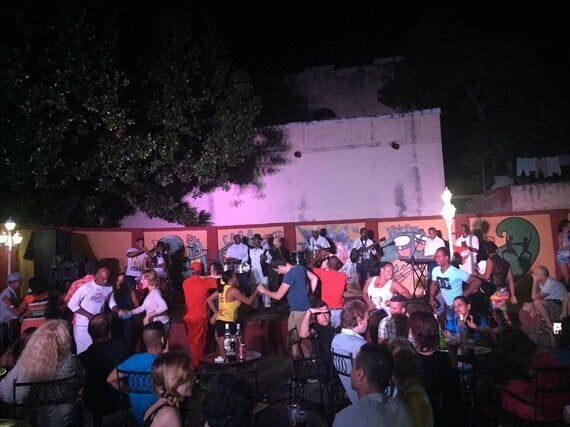
So my advice to you, dear reader - go visit Cuba! As soon as possible. Even Americans should go before McDonalds and Starbucks attempt to invade!
You can read more and see more photos of this beautiful country at The Mutton Club, an online magazine and community to inform, entertain and empower women in midlife.
